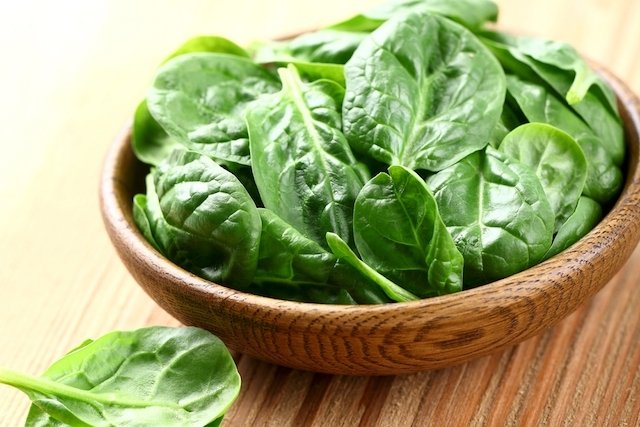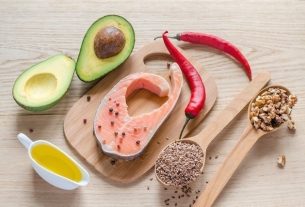Hypovitaminosis occurs when there is a lack of one or more vitamins in the body, and is almost always caused by a very restricted diet that is poor in some foods, as happens with products of animal origin in the case of vegetarians.
However, a lack of vitamins can also occur due to some health problems such as liver problems, changes in the intestine or more serious illnesses such as anorexia or cancer.
1. Lack of vitamin A

Although it is rare, a lack of vitamin A can occur when there is a reduction in the intake of foods rich in this vitamin, such as milk, cheese, carrots or spinach, for example. However, a lack of vitamin A is also common in people with liver problems or malabsorption syndrome, for example.
Main symptoms: The main symptom consists of changes in the eyes, such as dry eye and spots, which can cause night blindness. But in addition, other signs include constant colds and flu, dry skin and mouth, lack of appetite and headaches.
How to deal with: Treatment is usually done with vitamin A supplementation, which must be taken every day. However, the amount of vitamin A should always be calculated by a doctor or nutritionist, as excess vitamin A can be toxic to the body.
2. Lack of B vitamins

B complex vitamins can be divided into several subgroups, and therefore the lack of all type B vitamins is quite rare, occurring especially in cases of anorexia, where there is a marked reduction in the intake of almost all foods. .
The B complex vitamins that are most frequently missing are:
A lack of vitamin B1, also known as beriberi, can occur due to various problems such as reduced intake of carbohydrate foods, cancer, hyperthyroidism, liver problems or excessive use of diuretic medications. Furthermore, during pregnancy there may also be a deficiency of this vitamin, as it is a stage in a woman’s life where the body needs greater amounts of the vitamin.
Main symptoms: symptoms such as weakness and excessive tiredness, frequent muscle cramps, general malaise, heart palpitations, fluid retention or lack of memory, for example, may appear.
How to deal with: Supplementation of this vitamin is normally used for at least 6 months. However, it is recommended to make changes to your diet, avoiding alcoholic beverages and increasing your intake of foods rich in the vitamin. See a complete list of foods with vitamin B1.
In addition to reduced intake of foods with vitamin B6, a lack of this vitamin can also occur in people with kidney problems, intestinal diseases, rheumatoid arthritis or excessive alcohol consumption.
Main symptoms: This vitamin is very important for the nervous system, so a lack of it can cause confusion, depression, weakening of the immune system, swelling of the tongue, skin problems and anemia.
How to deal with: It is recommended to use vitamin B6 supplements, in addition to increasing your intake of foods rich in the vitamin, such as salmon, chicken or bananas, for example. Discover other foods rich in vitamin B6.
Deficiency of this type of vitamin is more common in vegetarians, since the main sources of vitamin B12 are products of animal origin, such as eggs, meat or cheese, which are not part of the most restricted vegetarian diets. However, a lack of this vitamin can also occur in people with a decrease in intrinsic factor, which is a substance produced in the stomach that helps absorb vitamin B12.
Main symptoms: The lack of vitamin B12 is one of the main causes of anemia and, therefore, some symptoms of its lack in the body can include excessive tiredness, weight loss, tingling in the hands and feet, confusion, lack of balance or mouth sores, for example. example.
How to deal with: It is advisable to make changes to your diet, increasing your consumption of foods rich in this vitamin. However, in the case of vegetarians or people with a lack of intrinsic factor, it may be necessary to have injections of the vitamin. Find out more about the lack of this vitamin.
Check out a complete list of symptoms of a lack of each B complex vitamin.
3. Lack of vitamin C

Vitamin C cannot be produced by the human body and, therefore, must be ingested through foods such as oranges, spinach or tomatoes. Furthermore, people with changes in intestinal absorption, as in the case of Crohn’s disease or ulcerative colitis, also have a high risk of deficiency of this vitamin.
Main symptoms: The first signs include tiredness, muscle pain and purple spots on the skin, however, as the problem worsens, swelling and bleeding of the gums, recurring infections or loss of teeth may appear, for example.
How to deal with: In addition to taking vitamin C supplements, it is necessary to increase your intake of foods rich in the vitamin. See which foods have the highest concentration of vitamin C.
4. Lack of vitamin D

In addition to reducing the intake of foods with vitamin D, such as salmon, eggs or sardines, a lack of this vitamin can also occur when there is not enough exposure to the sun, for example.
Main symptoms: The most common signs are bone pain and muscle weakness. However, over time, more serious problems may arise, such as cardiovascular disease, cancer or severe asthma in children.
How to deal with: one should increase the intake of foods with vitamin D and use vitamin D supplements. Furthermore, it is recommended to increase safe sun exposure, as the body is capable of producing vitamin D when exposed to sunlight. See which foods you should add to your diet.
5. Lack of vitamin K

Lack of vitamin K is more common in babies, being caused by problems such as low transmission of the vitamin through the placenta, prematurity of the liver or reduced amount of vitamin K in the mother’s mouth. However, vitamin K deficiency can also occur in adults with conditions such as alcoholism, malabsorption syndromes or use of antibiotics, for example.
Main symptoms: A lack of vitamin K can cause symptoms such as blood clotting problems, frequent bleeding and purple spots on the skin.
How to treat: it is recommended to use vitamin K supplements, which must be calculated by a doctor. Furthermore, it is important to increase your intake of foods rich in vitamin K. See the list of foods with the most vitamin K.

Sign up for our newsletter and stay up to date with exclusive news
that can transform your routine!
Warning: Undefined array key "title" in /home/storelat/public_html/wp-content/plugins/link-whisper-premium/templates/frontend/related-posts.php on line 12
Warning: Undefined array key "title_tag" in /home/storelat/public_html/wp-content/plugins/link-whisper-premium/templates/frontend/related-posts.php on line 13




